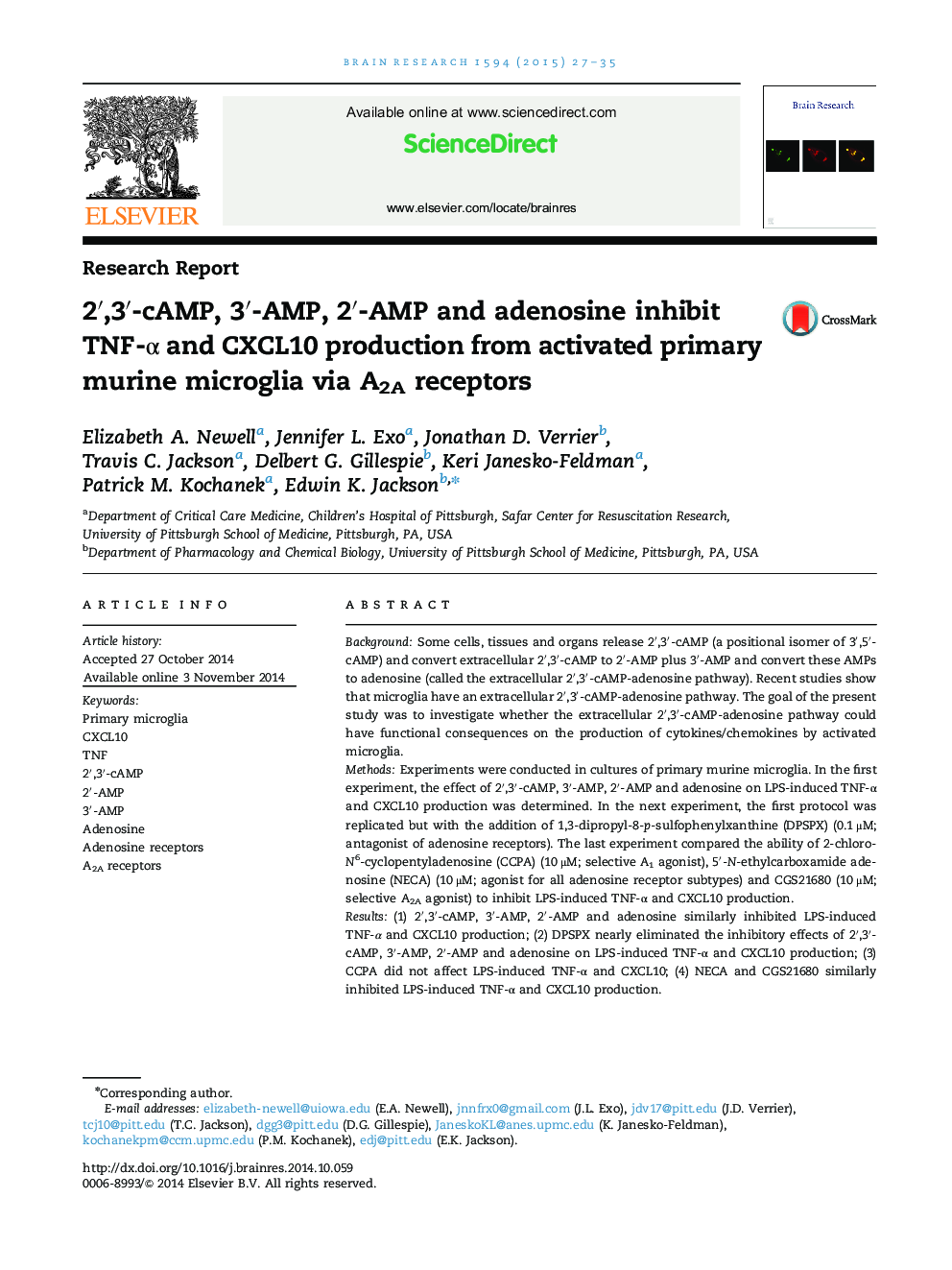| Article ID | Journal | Published Year | Pages | File Type |
|---|---|---|---|---|
| 4324004 | Brain Research | 2015 | 9 Pages |
•The 2′,3′-cAMP-adenosine pathway is: 2′,3′-cAMP→2′-AMP+3′-AMP→adenosine.•Microglia express a 2′,3′-cAMP-adenosine pathway.•The 2′,3′-cAMP-adenosine pathway inhibits LPS-induced cytokine release.•A2A receptorsmediate inhibition of cytokines by the 2′,3′-cAMP-adenosine pathway.•The 2′,3′-cAMP-adenosine-A2A receptor axis may regulate neuroinflammation.
BackgroundSome cells, tissues and organs release 2′,3′-cAMP (a positional isomer of 3′,5′-cAMP) and convert extracellular 2′,3′-cAMP to 2′-AMP plus 3′-AMP and convert these AMPs to adenosine (called the extracellular 2′,3′-cAMP-adenosine pathway). Recent studies show that microglia have an extracellular 2′,3′-cAMP-adenosine pathway. The goal of the present study was to investigate whether the extracellular 2′,3′-cAMP-adenosine pathway could have functional consequences on the production of cytokines/chemokines by activated microglia.MethodsExperiments were conducted in cultures of primary murine microglia. In the first experiment, the effect of 2′,3′-cAMP, 3′-AMP, 2′-AMP and adenosine on LPS-induced TNF-α and CXCL10 production was determined. In the next experiment, the first protocol was replicated but with the addition of 1,3-dipropyl-8-p-sulfophenylxanthine (DPSPX) (0.1 μM; antagonist of adenosine receptors). The last experiment compared the ability of 2-chloro-N6-cyclopentyladenosine (CCPA) (10 μM; selective A1 agonist), 5′-N-ethylcarboxamide adenosine (NECA) (10 μM; agonist for all adenosine receptor subtypes) and CGS21680 (10 μM; selective A2A agonist) to inhibit LPS-induced TNF-α and CXCL10 production.Results(1) 2′,3′-cAMP, 3′-AMP, 2′-AMP and adenosine similarly inhibited LPS-induced TNF-α and CXCL10 production; (2) DPSPX nearly eliminated the inhibitory effects of 2′,3′-cAMP, 3′-AMP, 2′-AMP and adenosine on LPS-induced TNF-α and CXCL10 production; (3) CCPA did not affect LPS-induced TNF-α and CXCL10; (4) NECA and CGS21680 similarly inhibited LPS-induced TNF-α and CXCL10 production.Conclusions2′,3′-cAMP and its metabolites (3′-AMP, 2′-AMP and adenosine) inhibit LPS-induced TNF-α and CXCL10 production via A2A-receptor activation. Adenosine and its precursors, via A2A receptors, likely suppress TNF-α and CXCL10 production by activated microglia in brain diseases.
